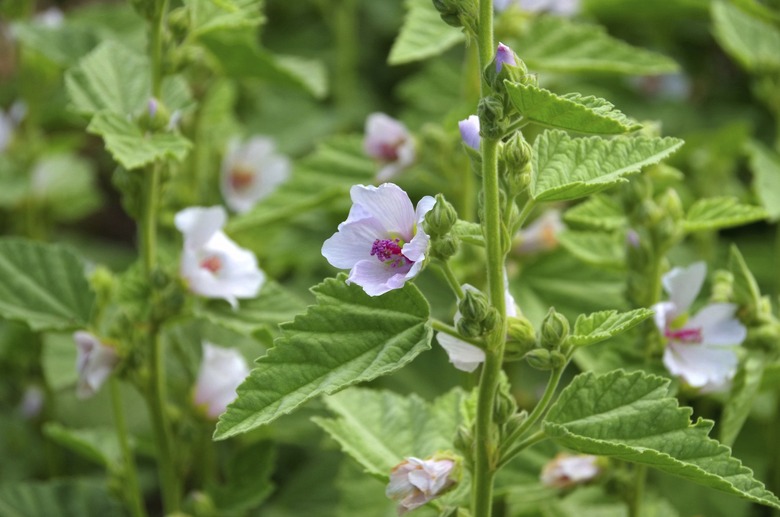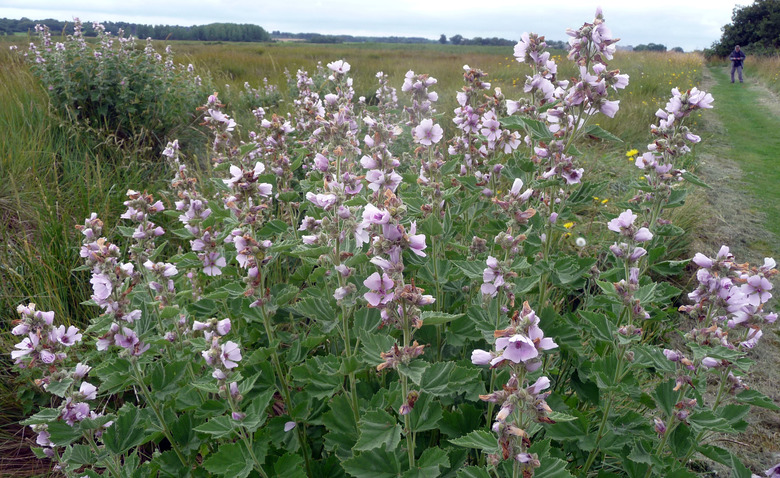How To Grow A Marsh Mallow Plant
The marshmallow plant, more correctly called marsh mallow (Althaea officinalis), is a perennial in USDA plant hardiness zones 3 through 9 that grows best in full sun on moist soils.
Marshmallows vs. Marsh Mallows
Although you can't grow the sweet confection known as marshmallow candy, you can grow the marsh mallow plant from which the original treats were made. More correctly two words, although the single-word term is sometimes used, the marsh mallow plant (Althaea officinalis, Malvaceae family, USDA plant hardiness zones 3 to 9) doesn't actually bear white fluffy fruits called marsh mallows.
The original sweet treats were made from the unseen parts of the plant: marsh mallow's mucilaginous roots, which were cooked with egg whites, sweetened with honey and then whipped into a frothy, foamy "goo" that hardened as it cooled. **Present-day marsh mallows are typically made with sugar and corn syrup, using gelatin as a thickening agent instead of the natural mucilage from marsh mallow roots.**
A word in the marsh mallow plant's common name hints at one of the conditions needed for its optimal growth and abundant flowers. Even though you won't need a marsh situated behind your house to grow this mallow family plant, you will need to provide lots of water to keep it in the peak of health.
Can You Grow Marshmallows?
If you can provide the environmental and cultural conditions this plant needs, you can grow "marshmallows," meaning the marsh mallow plant. But you'll more likely want to grow it for the pretty pale pink flowers resembling hollyhocks, which bloom on 4- to 6-foot-tall stems in summer.
Your garden needs to be located in USDA plant hardiness zones 3 through 9 to support the perennial growth of the marsh mallow plant, and it also needs to be planted where it receives full sun to make sure it bears profuse flowers.
If rainfall doesn't keep the soil consistently moist, you'll need to get out the garden hose and keep this plant hydrated. Unlike most landscape plants that need well-draining soil, the marsh mallow plant flourishes even when planted on heavy clay that retains water. It's a perfect candidate for a bog garden, rain garden or creek bank.
How Do Marsh Mallows Grow?
When you need a fast-growing perennial flowering plant to fill in a bare spot as a standalone plant or provide the backdrop for lower-growing plants, marsh mallow may fit the bill. Established plants grow quickly—up to 6 feet tall with a potential 4-foot spread in a single growing season—and then they die back to the ground in winter.
Generally, plants take a shrubby form because of their branched stems, although some stems may be straight and unbranched.
Tip
A full sun location and moist soil are essential to ensuring optimal health and abundant marsh mallow flowers.
How to Grow a Marsh Mallow Plant
**Sun Requirements:** Providing this plant with full sun is a must to ensure optimal health and abundant marsh mallow flowers. If you plant it on a shady site, it will still grow, but flowering will be greatly reduced, and you may only grow an herbaceous foliage plant. However, if you're growing this plant in your apothecary garden as an herbal medicine herb for its roots instead of a flowering ornamental plant, you can grow it on a partial sun site.
**Soil and Mulch:** Another must for growing this plant is moist soil, and mulch can help any type of soil retain moisture and reduce the time you spend watering your marsh mallow plants.
**Amendments and Fertilizer:** Because the marsh mallow plant is adaptable to almost any type of soil, it's not necessary to amend heavy soil, although you may want to enrich sandy soil with organic matter to hold more water. Use a light hand when applying fertilizer; a slow-release product or organic equivalent just once in spring at half the rate for other landscape plants will do.
**Dividing:** When plants begin to die back in fall (or just before that), you can dig up the marsh mallow roots and divide them. Wait until plants are at least 2 years old before dividing the roots, because the root systems of younger plants aren't strong enough to withstand division—and resulting plants could be weakened from this stress. You can also divide the mallow roots in early spring, but this may further stress plants; fall is the better time.

